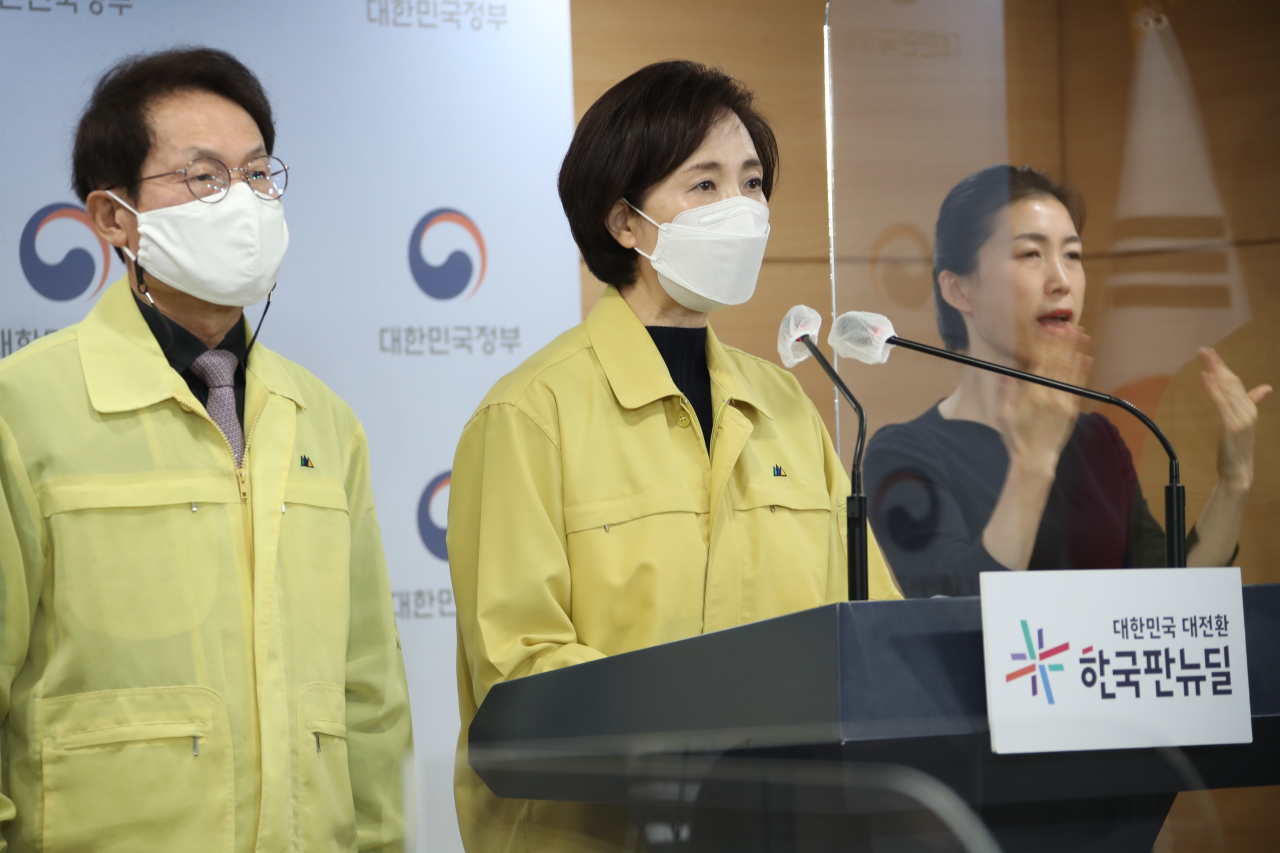Classrooms centered on remote learning are interfering with learning and compounding existing achievement gaps among students in South Korea, a report has found.
The report released Tuesday showed that the achievement gap among middle school students grew faster in 2020 than in previous years. The authors asked the educational authorities to improve online learning systems and interaction among students and teachers.
According to a study by the Seoul Education Research and Information Institute involving students at 382 middle schools in Seoul, the proportion of students with grades between B and D in three key academic subjects -- Korean literature, mathematics and English -- dropped greatly.
“The achievement gap within schools had already widened before the COVID-19 pandemic started, but the trend has generally accelerated since the outbreak,” the report said.
In Korean middle schools, a grade of A is equivalent to a score of 90 percent or more. A B is between 80 percent and 89 percent, a C is between 70 percent and 79 percent, a D is between 60 percent and 69 percent, and an E is below 60 percent.
The study found that the proportion of second-year middle school students with grades between B and D in Korean literature fell from 58.2 percent in 2018 to 56.5 percent in 2019 and 49.35 percent in 2020.
For math, the figure fell more than 10 percentage points, from 44.4 percent in 2018 to 34.2 percent last year. For English, it declined from 44.1 percent in 2018 to 35.1 percent last year.
While the changes for all three subjects were relatively small between 2018 and 2019, the figures fell an average of 8.0 percentage points in 2020. The study also found that the proportion of B through D students dropped sharply among middle school seniors in 2020.
The proportion of students with math grades of B to D fell 14.91 percentage points from 43.59 percent in 2019. The corresponding figures fell 2.95 percentage points for Korean literature and 8.84 percent for English.
The research supports warnings that many experts have made. Months have passed since the coronavirus-triggered distance learning experiment started, and teachers have repeatedly expressed worries that some students were falling behind and failing to stay engaged.
“On most days, less than half of my class was actually focusing on what I was saying across the videoconferencing platform, and not many seemed to be interested in taking online classes after all,” said a middle school teacher surnamed Jeon based in Guro-gu, western Seoul.
“I did try everything I could, nothing was too helpful. Top students always stayed where they were, but the rest were just falling behind and they didn’t even care. I guess it was unavoidable after all.”
Jeon is not the only teacher who has seen the achievement gap grow since the COVID-19 pandemic started, a survey shows.
According to a survey of 5,119 teachers carried out in November by the National Education Council, 89.6 percent of the respondents said the achievement gap would widen if online classes continued.
Only 27.5 percent of the respondents considered online learning more effective, while 87.6 percent voiced concern that continued remote learning would negatively affect students’ social skills.
And dozens of surveys, seminars and reports have suggested that the remote classroom environment could harm students’ learning abilities and leave them ill-prepared for higher education. But the authorities have been slow to address the issue.
Since the new school year started last month, teachers and students have experienced difficulties and delays in accessing and using the two main remote learning systems.
Many users across the country experienced login errors and problems playing videos for online classes as a result of server issues, and for some teachers and students the problem has continued for more than a month. Some teachers have resorted to external videoconference applications, as they did last year.
The Ministry of Education spent 3.7 billion won ($3.31 million) to improve the Educational Broadcasting System software and 6 billion won to enhance the Korea Education and Research Information Service’s e-Learning site.
But the investments have failed to deliver the desired results for all parties.
The government vowed earlier this year to launch a newer system to facilitate an improved interactive learning environment, but it failed to arrive on time. A separate plan for a new system, planned for August, is also in doubt.
The Education Ministry has also looked at the possibility of expanding in-person classes, but the rise in COVID-19 cases this month could hinder that initiative.
Education Minister Yoo Eun-hae told reporters last month that the ministry was prioritizing an expanded proportion of in-person classes for middle school students, especially those in the Greater Seoul area.
According to the ministry, an average of 56.4 students and 8.3 teachers at elementary, middle and high schools were diagnosed with COVID-19 each day in the seven days ending Wednesday last week.
The country has discovered more than 1,825 cases in students and 258 cases in teachers since March.
To better address the COVID-19 situation in schools, the ministry announced Wednesday that it would run a special prevention period until May 11 while dispatching testing teams to schools to provide PCR tests upon request for people without symptoms.
“Many virus experts diagnose that schools could recover back to normal in a matter of days if basic virus control rules are followed even when new cases are uncovered within schools,” Yoo said in a press conference Wednesday.
“We will stay alert and go over the basics to monitor the virus situation in school, and we will ensure that basic quarantine rules are strictly followed at all educational institutions.”
By Ko Jun-tae (
ko.juntae@heraldcorp.com)








![[Today’s K-pop] Blackpink’s Jennie, Lisa invited to Coachella as solo acts](http://res.heraldm.com/phpwas/restmb_idxmake.php?idx=644&simg=/content/image/2024/11/21/20241121050099_0.jpg)